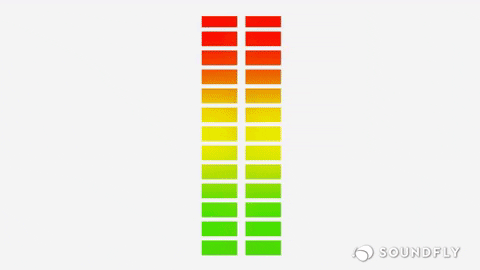
Drums are one of the most important elements in a mix. They provide the backbeat and the foundation for the other instruments. But if they’re not panned correctly, they can sound cluttered and muddy.
In this blog post, I'll show you how to go about panning drums for a clean and well-balanced mix. I'll also provide some background on what panning is, its benefits, and why it's so important in mixing. So if you’re ready to learn how to pan drums like a pro, read on!

Panning is the process of placing sounds in a stereo or surround sound field. By panning a sound, you can control its placement and movement within the mix. Panning can be used to create a wide sound stage, to place sounds in specific locations, or to create movement within the mix.
There are a few different methods of panning, but the most common is to use the pan pot on a mixing console or within a daw. This allows you to control the placement of a sound within the stereo field.
Panning is an essential tool for any engineer to create professional-sounding mixes that sound larger than life.
Related Article: What Is Mixing In Music And Why It's Important For You To Know?
There are many benefits when it comes to panning when mixing music. Some of them we went over when discussing what panning is. Here are 5 reasons why panning makes your mixes sound more professional.
When it comes to panning drums, you can look at it from two different perspectives; the audience or the stage. From the audience's perspective, you will pan things as they see them. For example, if the floor tom is on the left side of the kit, then you would pan it to the left. If you are doing the stage perspective then you would do the opposite.
These perspectives tend to matter more in live mixing. When mixing live, the engineer can see the drum kit and will typically mix from the audience's perspective as that is where they are located. Mixing a song in the studio, this is not the case.
If a session is being shipped off to a mix engineer, the overheads left and right are usually already defined by the recording engineer. This will tell the mix engineer where the drums need to be panned, which we will get into later in this article.
Panning drums may seem like a complicated process but in all actuality, it's super simple. Best of all, you can follow the same process every time you do it. With that being said, you should always begin with the overheads.
Overheads are the simplest of the drum kit to pan. You should always record overheads in stereo giving you a left and right track. You simply want to pan the left overhead 100% to the left and the right overhead 100% to, you guessed it, the right!
Some engineers like to do them at 90% so they can leave room for their effects on the outside. I don't feel this is necessary. I actually like my overheads to blend in with the effects when it is all said and done.
The kick and snare drums always get panned right up the center. These drums are the driving force of the kit and need to help make the song move. With the kick and snare in the center, everything in the kit feels like they take a back seat to them. That is what we want.
NOTE: In some genres like jazz, an engineer might pan the snare drum out of the center. I don't recommend this in any modern-day radio genre.
These 3 drums are the most challenging to pan because they require constructive listening to the overheads. When listening to the overheads, you want to see if you can pick out where in the stereo spectrum these drums are and then place them there. The hi-hat is usually 10-20% to one side, the toms are all over the place and as far as 60% to one side, and the ride can be right up the middle or far off to one side.
It is all about listening to the overhead tracks!
Now you have learned what panning is, panning benefits, panning perspectives, and the best way to handle panning drums. You may read about other ways to go about panning drums, but I guarantee you won't go wrong with this method. You will have a clean drum sound and all the instruments within the kit will be where they are supposed to be. No oddities, no phase issues, just the way they're supposed to be.
If you found the information in this article helpful, please consider subscribing to my blog for more music production tips, tricks, and advice. Now, go into your daw and pan some drums the right way!
"Some of the links within this article are affiliate links. These links are from various companies such as Amazon. This means if you click on any of these links and purchase the item or service, I will receive an affiliate commission. This is at no cost to you and the money gets invested back into Audio Sorcerer LLC."